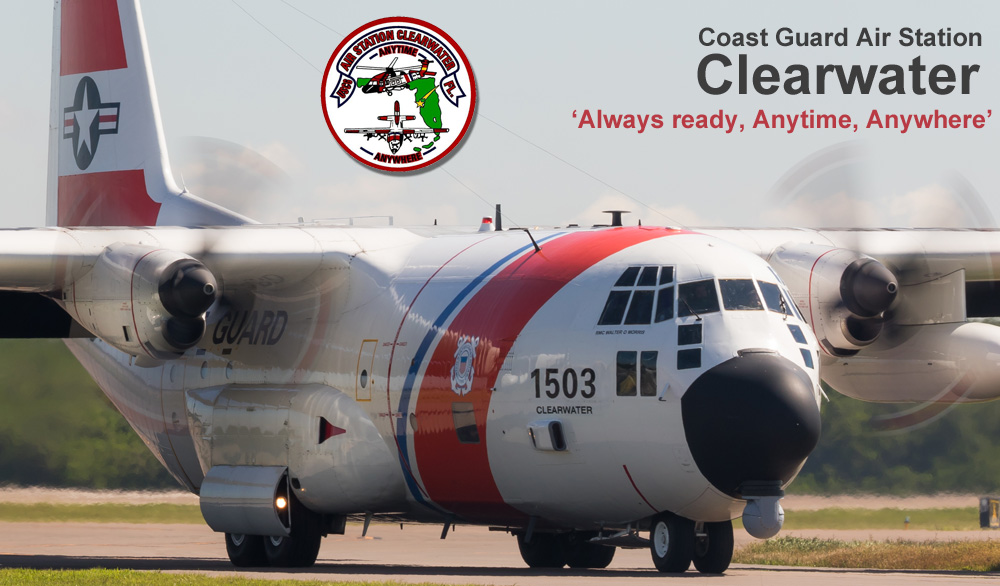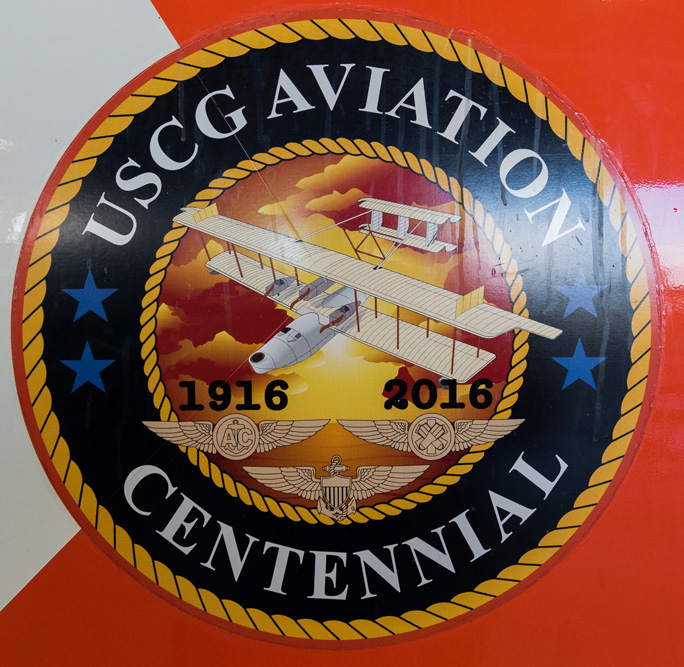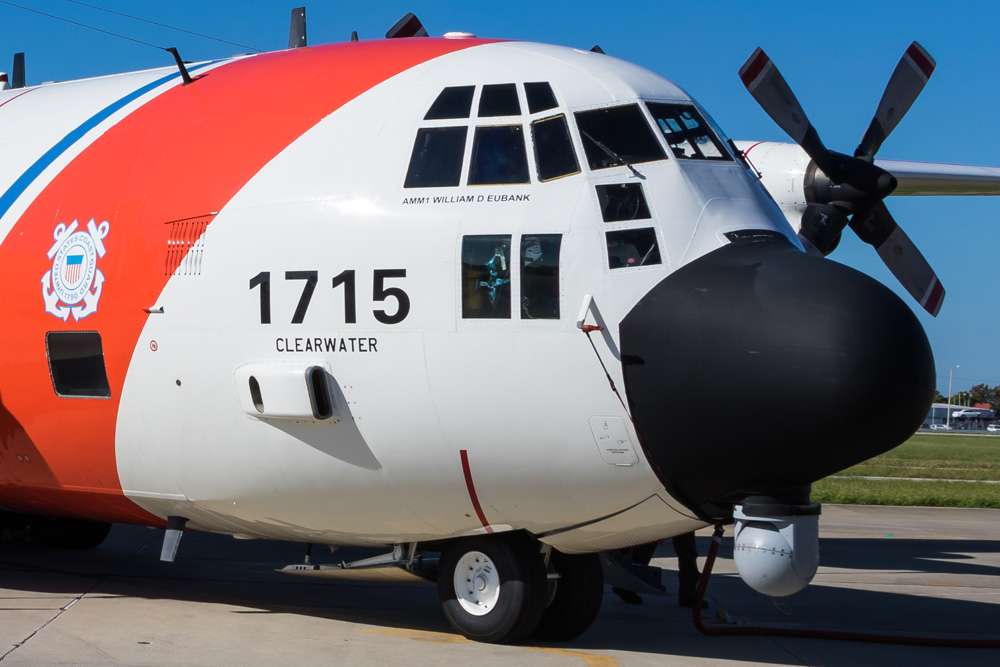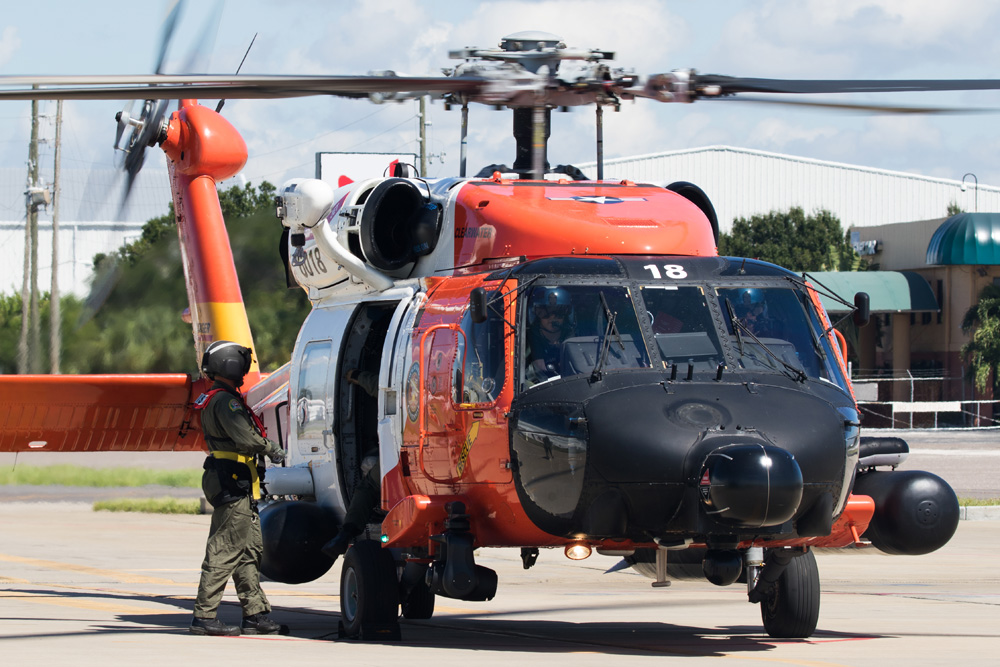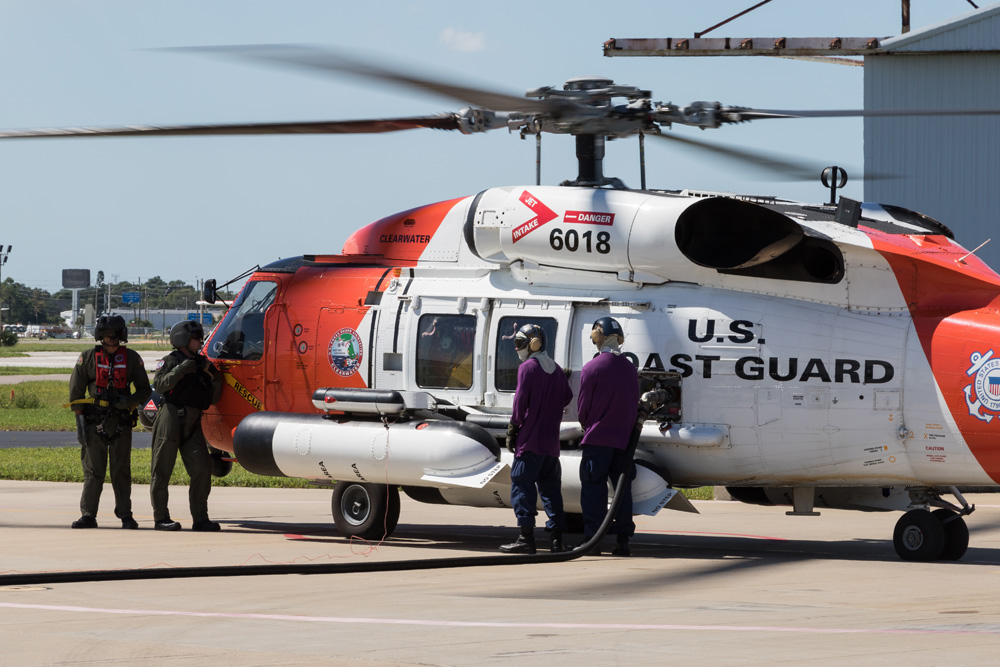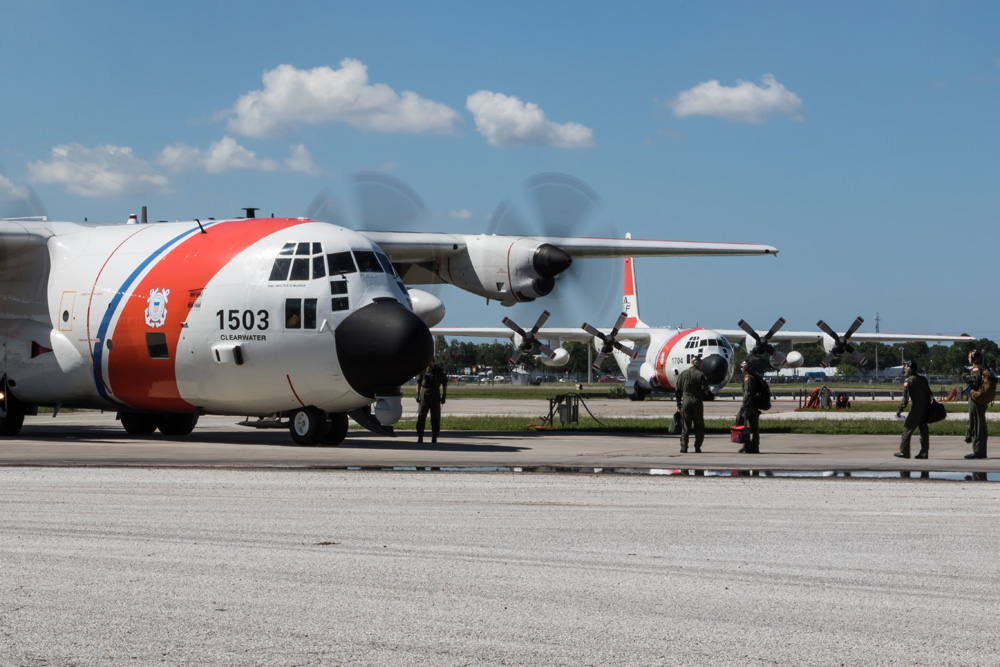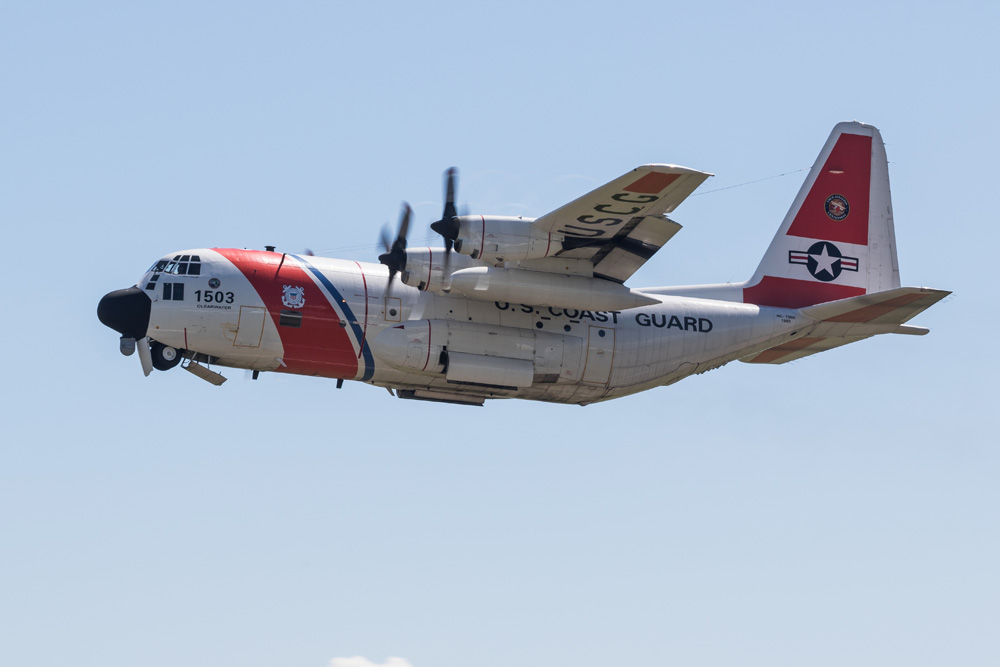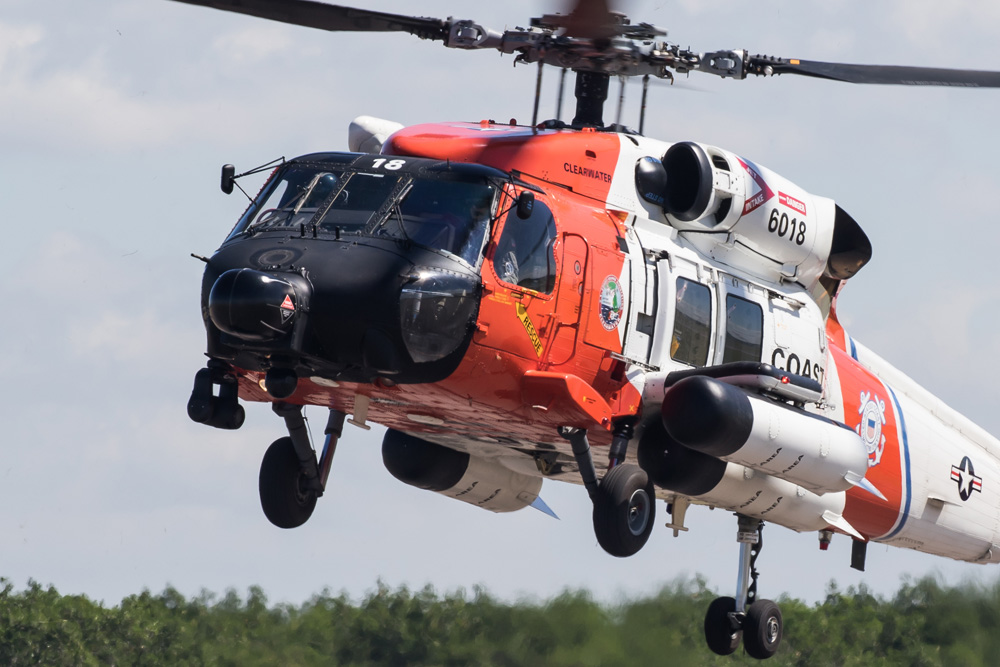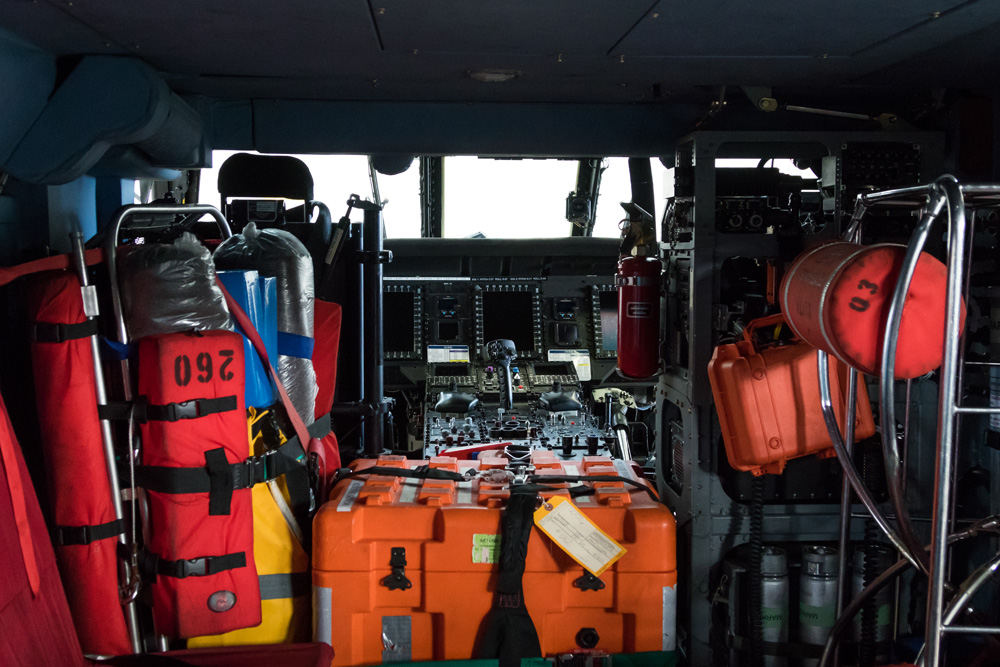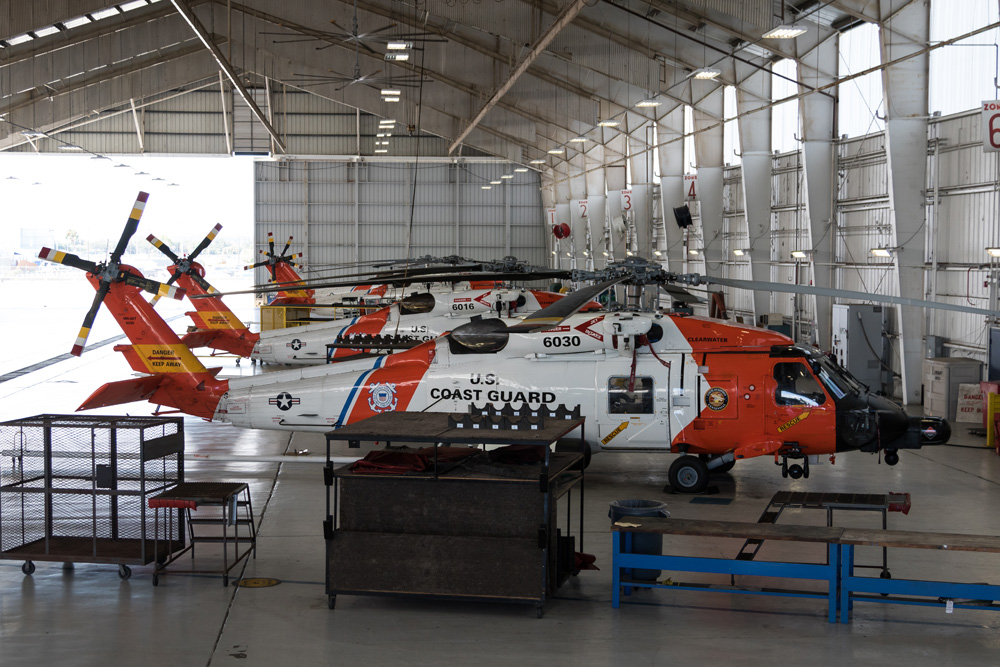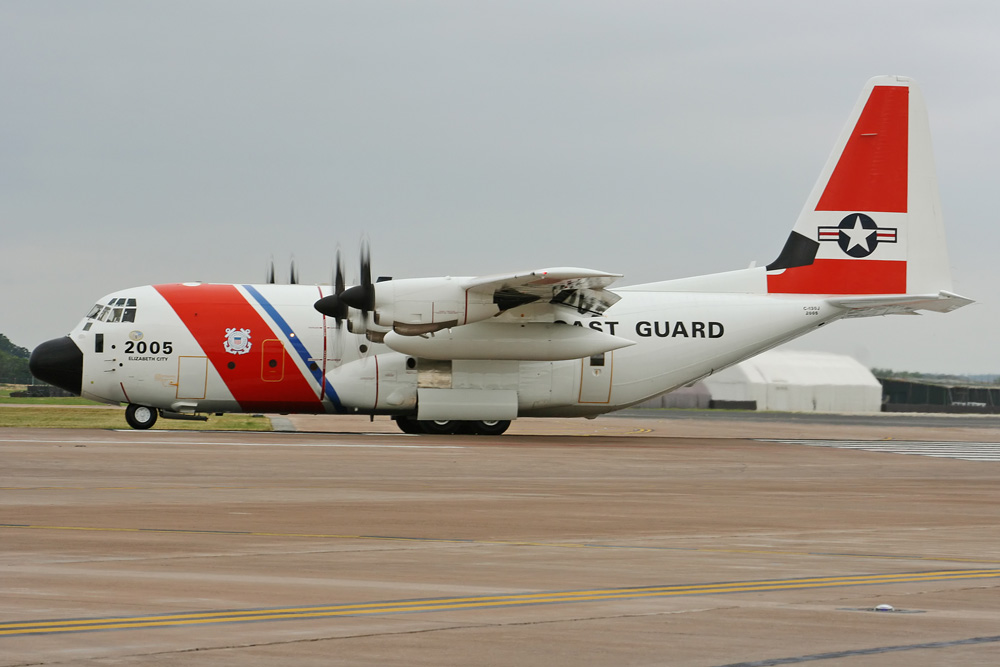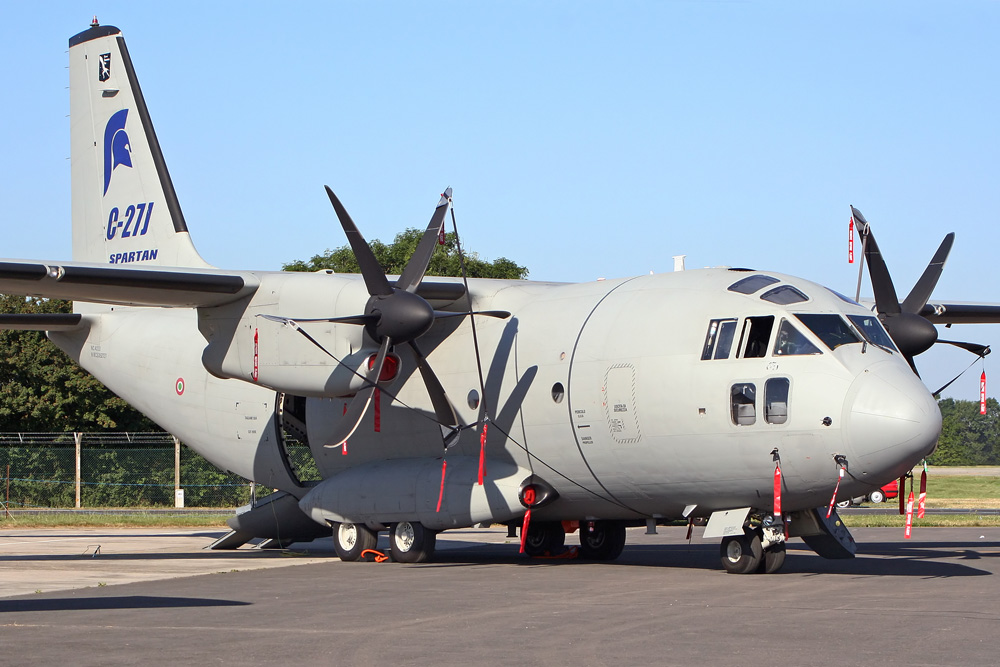The U.S. Coast Guard (USCG) is a military, multi-mission, maritime force offering a unique blend of military, law enforcement, humanitarian, regulatory, and diplomatic capabilities. These capabilities support three broad roles: maritime safety, maritime security, and maritime stewardship. The aircraft of USCG aviation are divided over 17 main air stations. Coast Guard Air Station (CGAS) Clearwater, located in the west of the Florida peninsula, is one of the largest and busiest of them.
The U.S. Coast Guard
The United States Coast Guard (USCG) is one of the five branches within the armed forces of the United States of America and operates under the U.S. Department of Homeland Security (DHS), while the other four branches operate under the U.S. Department of Defense (DoD). During wartime the U.S. President or the Congress can transfer the USCG to the DoD. This would allow the USCG to perform military actions under command of the U.S. Navy, as part of the DoD. This only happened twice, in 1917 during World War I and in 1941 during World War II. Among the tasks of the USCG are maritime law enforcement, search and rescue and responding to maritime environmental pollution. Its mission is to defend the public, environment, economic and safety interests of the United States in every maritime region, including domestic waterways, ports, American shore lines and international waters.
In 1790, the establishment of the USCG was set by founding the Revenue Marine, later known as the United States Revenue Cutter Service (USRCS), as part of the U.S. Department of the Treasury. The USRCS was the only naval force of the early United States, until the U.S. Navy was re-established in 1798. After merging the USRCS and the U.S. Life-Saving Service on January 28, 1915, the modern USCG was formed. In 1939, the USCG was expanded with the Lighthouse Service followed by the Bureau of Marine Inspection and Navigation in 1942. President L. Johnson signed an Executive Order on April 1st, 1967 transferring the USCG to the newly formed U.S. Department of Transportation. New legislations to protect the American interests after the attacks on September 11, 2001 resulted in the transfer of the USCG to the U.S. Department of Homeland Security. In 2016 the USCG celebrated the centennial anniversary of Coast Guard aviation. Part of anniversary is to honor all fallen USCG aviation service men and woman by displaying their names on all aircraft and helicopters. In total, 17 aircraft and helicopters received a commemorative retro color scheme as part of these celebrations.
Currently, the USCG has approximately 39,000 men and women in active duty, 8,100 reservists, 7,000 civilian employees and 35,000 auxiliarists and operates 243 cutters, 1,650 boats and 201 aircraft. Their motto is 'Semper Paratus', which is Latin for 'Always ready'.
The Air Station
In 1934 the Coast Guard was located at Albert Whitted Airport in St. Petersburg. In a period of over 40-years several aircraft were in service for the USCG at Albert Whitted Airport, like amongst others the RD-4 Dolphin, the PBY-5 Catalina and the HU-16E Albatross. After the arrival of four HC-130 Hercules aircraft in 1976, the Coast Guard moved to St. Petersburg-Clearwater International Airport, Florida, together with nine HH-3F Pelican helicopters. In 1990, the USCG started to replace the Pelicans for the HH-60J's which eventually be converted into the MH-60T's.
St. Petersburg-Clearwater International Airport is a mixed military and public airport that is serving the Tampa bay area. The airport is mostly used by low-cost carriers while the larger airlines fly into Tampa Bay International Airport, located only 16 kilometers east of St. Petersburg-Clearwater International Airport. Another user of the airport is the US Army. They are maintaining an Army Aviation Support Facility (AASF) for Companies A and F, 5th Battalion, 159th Aviation Regiment and Medical Evacuation Unit. The AASF provides maintenance and operations support the battalion, operating UH-60 Blackhawk helicopters.
While the aircraft moved to St. Petersburg-Clearwater International Airport, the Sector Command Center (SCC) stayed in St. Petersburg. A Sector is a shore-based operational unit of the United States Coast Guard. Each Sector is responsible for the execution of all Coast Guard missions within its area of responsibility. The SCC provides 24-hour command, control, coordination, communications, intelligence, sensor-analysis, and data mining. The center is operationally supported by Cutters and the Air Station.
The US Coast Guard organization is divided in several units, called districts. The districts system was established in 1838 with six districts for the Lighthouse Service after an act of Congress. This number increased together with the growth of the United States. After multiple reorganizations and mergers, the final change took place in 1996 when the 2nd and 8th District were combined to form the new 8th District. This resulted in a total of nine districts. Air Station Clearwater is part of the 7th District, which has its headquarters in Miami, Florida. Air Station Savannah (Georgia), Air Station Borinquen (Puerto Rico), Air Station Miami (Florida) and OPBAT are also part of the 7th District.
Like any other air station, CGAS Clearwater has the basic mission package corresponding to the USCG tasks. Main operations consist of search and rescue, drug interdiction and maritime law enforcements including environmental pollution. Due to its geographic location drug-interdiction from the Caribbean and fighting human trafficking from Cuba takes up the largest share.
Training
To maintain the high level of expertise a lot of training is done. LT Matt Mayer, a MH-60T Jayhawk pilot and former United Stated Marine Corps CH-53 helicopter instructor pilot explains: "Each pilot will fly approximately three or four times a week, with one of those flights being an actual emergency call. During the training missions, all aspects will be trained, such as mock-rescues at remote locations, sling loads for the helicopters, preventive patrol flights and hot pit refueling. To use the aircraft in the most time effective manner, many missions are performed following a hot-seat transfer. During this transfer, the entire crew of an aircraft is swapped while the aircraft is in operation and running idle. This procedure saves the first air crew to perform a post-flight check, while shutting down. The second crew can skip the entire pre-flight check. Similar is the hot-pit refueling. During this procedure, the aircraft stays in idle operation so the crew can execute a new mission instantly after the refueling is completed."
Historic missions and operations
The USCG has supported many large operations in the Florida region. In 1980, the air station supported the surface fleet during the Mariel boatlift. This was a mass emigration of Cubans who traveled from Cuba's Mariel Harbor to the United States. In a period of six months nearly 125,000 Cuban refugees had reached Florida. This was followed in 1983 by supporting the US-led invasion in Grenada following a coup within the Grenada government, also known as Operation Urgent Fury.
One of the most impressive missions took place in 1986, when the Space Shuttle Challenger exploded during launch. Several air crews from Clearwater responded and were on scene when the debris was still falling. Eventually, 33 sorties were flown in support of the aftermath.
In 1992, the south of Florida and Louisiana was hit by hurricane Andrew, 'The Storm of the Century'. The crews flew both search and rescue and supply sorties continuously. It was the busiest search and rescue day in the history of the air station. A similar situation occurred in 2005 during hurricane Katrina. During a search and rescue mission 210 nautical miles southwest of CGAS Clearwater, a four-men crew of a Jayhawk helicopter rescued three persons from a fishing vessel during 85 knots winds and severe 40-foot-seas. For this rescue the helicopter crew was awarded the Distinguished Flying Cross. More recent was hurricane Harvey that hit Texas in August 2017. Five Jayhawk helicopters, two Hercules airplanes and nearly 40 crew members were deployed to Houston, Texas for hurricane relief operations. In the first day they rescued 67 people from the aftermath of hurricane Harvey.
The US Coast Guard is America's first line of defense against drug smugglers seeking to bring illegal substances into the United States. As part of this War on Drugs, the Air Station Clearwater took part in several large-scale operations in the past, like Frontier Shield (Puerto Rico and the Virgin Islands area) and Frontier Lance (Haiti and Dominican Republic area). Operations like Gulf Shield and Border Shield were held to maintain interdiction efforts in the maritime regions along the southwest border where the USCG worked closely with the Mexican Navy. During these operations, the Coast Guard set new records for both drug seizures and arrests.
The US Coast Guard also operates in hostile crisis locations. In 1991, a Clearwater C-130 was used for rapidly flying personnel and supplies in and out of the combat situation in support of operation Desert Storm, the air offensive by the coalition forces against Iraq as response of Iraq's invasion of Kuwait.
In conclusion, the Haitian coup d'état in 1991 led to the uprising in 1992. Clearwater crews evacuated American embassy personnel and transported US Special Forces into Haiti.
Current aircraft in service
In 1976, the first HC-130 became part of Air Station Clearwater, a B-model. Nowadays, four HC-130H are assigned to the air station. The HC-130H is operated by a crew of seven. LCDR Majeska elucidates: "In the cockpit you will find a pilot, a co-pilot, an engineer and a navigator. The navigator is the one who is monitoring the surface radar. In the cargo bay, you have the drop master, who is responsible for all cargo and in-flight droppings. To aid and assist the drop master there is also a basic airman on board."
The HC-130H is an ideal platform for long range search and rescue, because it has a flying range of more than 14 hours or 2,500 miles. It is equipped with large observation windows, a Forward-Looking Infrared (FLIR) turret mounted underneath the nose of the aircraft, infrared sensors and a surface radar to aid the numerous searches. LT Mayer describes:" For the rescue missions, the Hercules is capable of dropping air deliverable aid, like life rafts, dewatering pumps but also dispersant for oil pollution control. Due to the size of the aircraft it can deliver the very large life rafts for large scale rescues. These rafts can take up to 25 people, which is significantly more than the rafts that are on board the Jayhawks and are used during large maritime shipping incidents.
Besides search and rescue, with the aircraft CGAS Clearwater also supports Law Enforcement, Marine Environment Protection and logistics. LCDR Majeska adds: "Due to its large cargo bay we often haul goods around. For example, we fly often to our Forward Operating Basis in the Bahamas to support and resupply these units."
The Jayhawk is a medium-range all weather helicopter which is specialized in flying search and rescue missions. They entered the USCG service in 1990, as HH-60J replacing the HH-3F Pelican. In 2007, all HH-60J's were upgraded to the MH-60T, the model that is currently in service. The conversion mainly consisted in introducing a glass cockpit with all new avionics such as an enhanced electro-optic/infrared sensor system as well as a radar sensor system. Due to its long-range capability, it can operate 300 nautical miles offshore while supporting the Coast Guard cutters. "Some Jayhawk-pilot are even qualified to operate from a cutter which could extend the range", LT Mayer adds. The Jayhawk can perform for example law enforcement patrols, delivering dewatering pumps to sinking or flooded vessels and evacuate injured crew members from vessels far at sea. "The helicopter contains a deployable life raft which can hold up to ten persons. It's also equipped with a FLIR-turret in the nose of the helicopter. To extend or range of the helicopter, two additional fuel tanks are mounted on the left side of the helicopter and one on the right side. For evacuations, we use a floatable rescue basket which is connected to the hoist of the helicopter", a rescue swimmer adds. "It's our main tool we use during rescues." LT Mayer describes: "The Jayhawk aircrews from Air Station Clearwater fly over 400 SAR missions each year along the Florida coasts and the Bahamas. The MH-60T is usually operated by a crew of four, a pilot, co-pilot, two flight crew members supplemented with a rescue swimmer when needed." The helicopter also can be equipped with weapons, namely a 7.62mm machine gun and a .50 semi-automatic long range rifle. The machine gun is used for firing warning shots and can be mounted in the starboard door. The rifle is used for precise targeting, like disabling the outboard engine of a vessel 'on-the-run'.
Future
The oldest HC-130H within the USCG is currently in service at Air Station Clearwater and is dating from 1973. The USCG has in total 20 HC-130 in service, seven of which are the new J-model (HC-130J), which entered service in 2003. The J-models are all assigned to the Coast Guard Air Station Elizabeth City in North Carolina. Eventually all HC-130H Hercules aircraft will be replaced by the HC-130J by 2027. LCDR Majeska adds: "The Hercules will keep flying at Clearwater for at least five years. After that we will potentially transfer to the (H)C-27J Spartan, while the rest of the Coast Guard will transfer to the HC-130J. For the Jayhawks, I don't expect a replacement any time soon because the aircraft just had a major upgrade, which was completed in 2014."
This article was also published in Lotnictwo Aviation International 6-2018.
